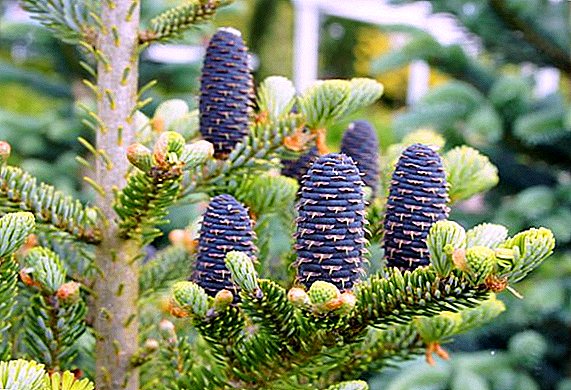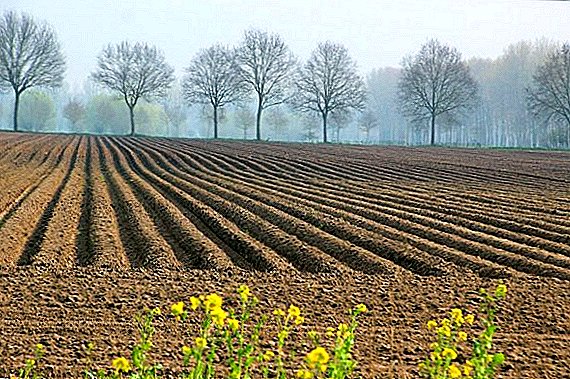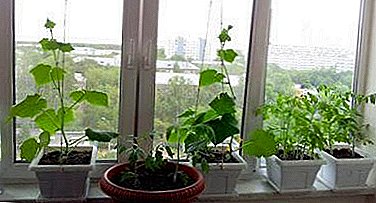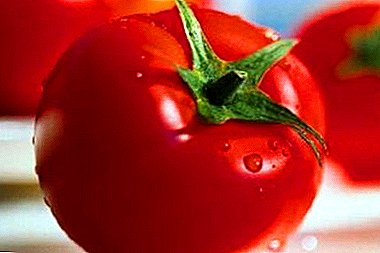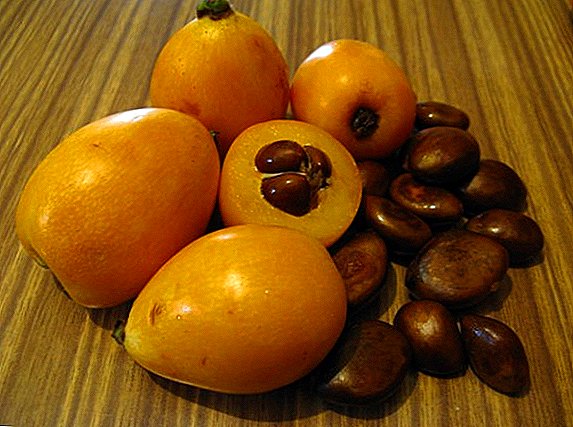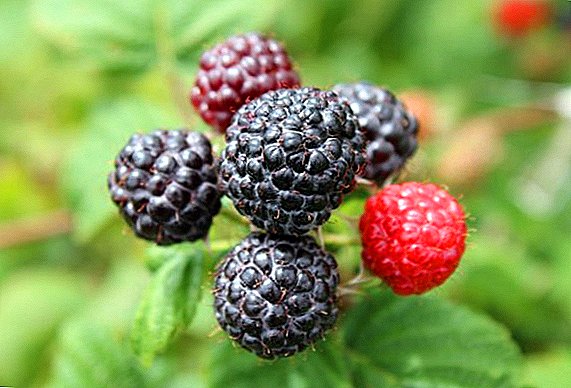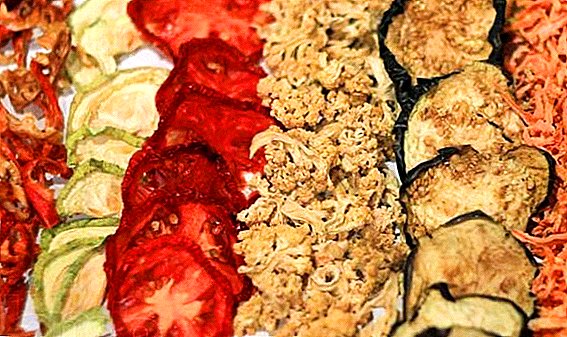 The lack of natural vitamins acutely affects the human body in the winter season. A lack of sun, fresh vegetables and fruits leads to a weakening of the immune system, vitamin deficiency and an increased risk of contracting ARVI-diseases. However, modern technologies make it possible, even in the cold season, to obtain a sufficient number of useful elements - for example, from dried fruits. Today we will look at how to dry vegetables for winter at home, how to harvest them, how to properly store and eat such products.
The lack of natural vitamins acutely affects the human body in the winter season. A lack of sun, fresh vegetables and fruits leads to a weakening of the immune system, vitamin deficiency and an increased risk of contracting ARVI-diseases. However, modern technologies make it possible, even in the cold season, to obtain a sufficient number of useful elements - for example, from dried fruits. Today we will look at how to dry vegetables for winter at home, how to harvest them, how to properly store and eat such products.
Advantages and disadvantages of this method
Drying is a very popular way of storing and stocking up supplies in the winter. However, this method has both positive aspects and disadvantages.
pros
- long storage of fruits;
- saving space during storage of the finished product;
- for the most part, the preservation of beneficial properties and vitamins of the fruit;
- the simplified process of preparation, in comparison with salting or roll-in;
- the possibility of long-term storage of dry fruits and vegetables (compared to canned);
- ease of use of dried products, the preservation of its taste and nutrients;
- the ability to dry those fruits that are not suitable for salting.

Minuses
The disadvantages of this process are:
- significant loss of weight and volume of the fetus in the finished form - they lose up to 90% of their mass;
- some loss of vitamins and beneficial properties of the product - the fruit loses up to 30% of its minerals and vitamin C;
- due to the loss of moisture, the fruits become dry, sometimes hard, which complicates the process of their preparation in the future;
- the drying process is not suitable for all vegetable fruits;
- the difficulty of preserving dried products - often mold spoils the fruit.
Did you know? The invention of such a method of storage as drying, scientists refer back to the Neolithic era - about 9000 years BC. er Because of the global cooling, the ancient inhabitants had to stock up on food for the future, because of which they were forced to dry roots, greens, and some vegetables in reserve.
What vegetables can be dried
The range of products suitable for drying vegetables for the winter is quite wide. It is noteworthy that only healthy fruits that are not susceptible to disease are suitable for harvesting. Dry only those parts of the product that are edible - no tops or roots.  You can dry almost everything - from celery to potatoes. Drying of carrots, peppers and beets is popular - it turns out a great preparation for borscht. Delicious dried chips are made from potatoes, and dried parsley and dill will give freshness and flavor to dishes during the cold season. Dried onions and garlic acquire a peculiar piquancy in a dry form, which in a new way reveals the taste of dishes.
You can dry almost everything - from celery to potatoes. Drying of carrots, peppers and beets is popular - it turns out a great preparation for borscht. Delicious dried chips are made from potatoes, and dried parsley and dill will give freshness and flavor to dishes during the cold season. Dried onions and garlic acquire a peculiar piquancy in a dry form, which in a new way reveals the taste of dishes.
It is noteworthy that such preparation methods as preservation and pickling do not retain the useful properties of the product and do not provide benefits for the body, due to the use of salt and vinegar. When drying, no additional spices or oils are used, which preserves the taste and vitamin composition of the products. Dried vegetables are a kind of concentration of all the beneficial properties that exist in their fresh counterparts.
Did you know? Greens and some herbs - the most favorable product that can be dried naturally, without the use of electric dryers.
Which are not recommended
Traditionally, the drying method is not used for those vegetables that are more than 85% water, since when they are prepared in this way they lose a lot of mass and the productivity becomes very low. These include:
- iceberg lettuce;
- cucumbers;
- radish;
- White cabbage;
- watermelon.

Preparing vegetables for drying
Drying is best seasonal foods - at this time they are little exposed to chemical treatments and retain the maximum amount of vitamins and minerals. When harvesting from your plot, it is best to use 2-3 picking vegetables - such fruits get juiciness and pronounced taste. It is best to use strong, healthy fruit, without damaging the skin or rot.
Important! It is impossible to dry ripe tomatoes in a cut form - the selected juice will stick to the rack of the dryer, making the process impractical. For harvesting tomatoes by drying, use only small varieties that can be dried entirely (for example, cherry tomatoes).
- Potatoes. Vegetable should choose late varieties, since it is in these species is the largest amount of starch. It is desirable that the fruit of the potato was with a thin skin, smooth, without eyes and dimples - so will not decrease performance. Tubers are thoroughly washed in cold water, then the fruit is peeled. Before drying, peeled and cut portions of potatoes must be kept in boiling water for 3 minutes and then cooled in cold water. Potatoes boiled in this way retain their nutrients. Now the potatoes are ready to dry.
- Beet. Fruits are selected with a bright, rich color - this indicates maturity and juiciness. Beets are washed in cold water, then boiled for 25 minutes. After the beets have cooled in cold water, they must be removed from the skin and cut into portions to dry.
- Carrot. The best fruits for harvesting are even with bright color. Preliminary training is carried out, as for beets, only the cooking time is reduced to 15 minutes. In order to preserve as much nutritional properties of this fruit as possible, it is better to use a blanching method for its preparation.
- Cauliflower. For the proper drying of cabbage is to remove all the leaves, stalk and damaged areas. Divide the inflorescences into small areas, wash them well and lower them for 10 minutes in salt water (this will save the product from caterpillars and aphids). Then you need to blanch the fruit in hot water for 25 minutes. The cauliflower is now ready for drying.
- Celery and horseradish. The roots are well washed, allowed to dry. Rub on a coarse grater and carry out drying in the appliance. Dried horseradish need to grind into powder. It is noteworthy that in the process of drying horseradish loses its aromatic properties by 70%.
- Red hot pepper. This fruit is dried whole, and already at the ready, dried pepper, seeds and peduncles are removed.
- Green pea. For harvesting, sweet pea varieties are used. As a preparation of peas, the method of blanching in hot water is used - 1-2 minutes for small peas, and 3 minutes - for large ones. After this procedure, the peas are rapidly cooled in cold water and allowed to dry. Now the product is ready for drying.
- Greenery. Spicy herbs such as parsley, spinach, nettle, dill, basil, mint, arugula, etc., are the most favorable material for drying. Before the greens need to rinse in cold water, removing dust and dirt from the leaves. It is advisable to use young shoots. Roots and damaged leaves must be removed. Clean grass is cut into pieces, laid out on the surface and dried naturally.
- Asparagus. Vegetable must be washed in cold water, cut off the hard parts, allowed to dry. After that, the pods are strung on a string - now the asparagus is ready for drying in the oven.
- Swede. It is better to choose the fruits are round, with thin skin, with a uniform color of the peel. Purified swede is also boiled in boiling water for 10 minutes, and then proceed directly to its drying.









Learn how to dry cilantro, sorrel, green onions, zucchini, squash, parsnip, broccoli, mushrooms for the winter.
Blanching and steaming
Blanching - This method of heat treatment of the product, in which there is the elimination of the specific odor and bitterness of the vegetable. The process consists in short-term immersion of the fruit in boiling water (boiling usually lasts no more than 10 minutes). Steam treatment is the process of drenching products with hot air released from boiling water. This procedure is carried out to disinfect the product and destroy unwanted bacteria.
Blanching and steaming are compulsory procedures before drying for most vegetables (the only exception is greens). This treatment retains the beneficial properties of the fruit, cleans them of dust and harmful chemicals (if the product was treated with chemical poisons or poison from parasites). Also, such procedures soften the fruits, making them more pliable when drying, and help to preserve the fruit more vitamins during subsequent drying. 
Popular drying methods
If earlier housewives used mainly ovens and the sun to dry vegetables and fruits, today modern equipment provides a lot of electric ovens and dryers, which in the shortest possible time will allow to prepare the product, preserving its useful properties. Let us consider in more detail each method of preparation.
Read also about the nuances of drying cherries, plums, apples, pears, strawberries, currants, grapes, cranberries, blueberries, wild rose, hawthorn, cornel, chokeberry, as well as oranges and lemons for decoration.
In the open air
This method has more disadvantages than advantages. First of all, not everyone has the opportunity to dry products in the open air - vegetables laid out in a row require a lot of space and a flat surface, otherwise the drying process cannot be carried out. Also, with this method of harvesting, there is a high probability of damage to the fruit by midges, bees or birds - the secreted juice of the product is bait for insects.
It is difficult to keep track of the process of drying - a strong scorching sun can turn the juicy flesh into charcoal, and a sudden rain - completely spoil the product. Do not forget to stir and turn the fruit, for their uniform drying. The main disadvantage of the method is the duration of the process - up to 4 days, which significantly reduces the quality of the finished supplies.  This method is well suited only for greenery - the sun and fresh air will quickly turn the grass into a dry powder. It is important to ensure that no moisture gets on the dried grass. It is also not recommended to spread the greens under the scorching rays - in this case, the grass and leaves will quickly burn. It is best to shade suitable shade in hot, dry, windless weather.
This method is well suited only for greenery - the sun and fresh air will quickly turn the grass into a dry powder. It is important to ensure that no moisture gets on the dried grass. It is also not recommended to spread the greens under the scorching rays - in this case, the grass and leaves will quickly burn. It is best to shade suitable shade in hot, dry, windless weather.
Freezing is another simple and efficient way to store food. You can freeze greens, potatoes, tomatoes, cucumbers, carrots, corn, broccoli, rhubarb, Brussels sprouts, zucchini, eggplant, pumpkin, beets, mushrooms (honey agaric, champignons, porcini mushrooms, oyster mushrooms).
In the electric dryer
This method is the most convenient and modern - in a special device you can dry the fruits in a few hours. In addition, electric dryers evenly warm the fruits from all sides, thanks to the function of air convection. There is a rule that speeds up the process of harvesting vegetables in an electric dryer: you need to lay the fruit skinned down, and the pulp can be slightly pressed down to speed up the process of excretion of liquid.
As a rule, electric dryers for home use have small dimensions, which facilitates their transportation and operation. In some models, an additional grid with a fine mesh is provided - it is intended for drying of particularly small fruits, such as peas, cherry tomatoes, etc. As a rule, the optimum temperature when drying in the appliance is from +40 ° С to +60 ° С. 
In the oven
The way to dry vegetables in the oven also has its advantages and disadvantages. This method is called artificial. It became popular because of the availability of available appliances - practically every hostess has ovens in the kitchen today.
In order to use the oven as a dryer, it is necessary to cover the baking sheet with parchment paper, arrange the harvested vegetables on it, place the baking tray on the top shelf and turn on the oven to the minimum temperature. The door must be open. After 25 minutes, you need to move the vegetables down and dry until done.
Please note: if the blanks in the oven continue to produce juice, then they have not yet dried. If the fruit is broken during compression, this also indicates the unavailability of supplies.
The disadvantage of this method of preparation is the need to dry the vegetables in several approaches - if you dry them in the oven at once, they will look like crackers. Therefore, usually vegetables are prepared in this way for 2-3 days.  For processing it is recommended to use an electric oven.
For processing it is recommended to use an electric oven.
Important! The temperature in the oven when drying vegetables should not exceed +60 °C. Otherwise, the fruit will burn or become overdried.
In the microwave
Drying vegetables in the microwave is also gaining popularity. The main trick of this method: the thinner the fruits or vegetables are sliced, the faster they will dry. The disadvantage of this method of processing is the impossibility of harvesting a large number of fruits - so this method is convenient only when you need to quickly dry a small amount of the product.
Electromagnetic oscillations in a microwave oven allow you to quickly heat and dry the product, which makes this method the fastest of these. In addition, the faster the vegetable material is processed, the less useful vitamins it has to “evaporate” from it. It is noteworthy that if the fruit is sliced with a thickness of more than 2 cm, the microwaves, passing into it, lose up to 50% of their capacity - this significantly reduces the speed of cooking supplies.  Also processing of the product with microwaves is carried out evenly, unlike drying in the oven.
Also processing of the product with microwaves is carried out evenly, unlike drying in the oven.
Did you know? Harvested dried vegetables can be consumed in dry form. However, it is possible to return their meatiness: by soaking the fruit for 2-3 hours in water. The taste of the fruit will be different from the original product.
How to store dried vegetables at home
The main rule of storage of the finished dry product: eliminate moisture and moisture ingress into dried vegetables. Therefore, the best way to store is considered the preservation of the dried product in glass jars with a resealable lid, or in food plastic containers. The main thing is to ensure good sealing of the container in order to prevent the ingress of air (particles of moisture in the air can disturb the quality of the dry product).
Please note: it is impossible to keep dry products in a plastic bag - this is how mold is triggered. Do not forget to periodically review the supplies, throw away the spoiled fruit, dry, if necessary, softened vegetables.
Having considered various options for drying vegetables for the winter, it can be said that harvesting the product in this way is a very convenient and low-cost way that will provide the whole family with useful vitamins and trace elements during the cold season. Adhering to the basic rules and recommendations on the harvesting of vegetables, you can without any efforts and particular hassle prepare dried vegetables at home.


